Photo Rejuvenation Surgery
Photorejuvenation is a skin treatment that uses intense pulsed light or other thermal or chemical methods to treat some skin conditions and remove wrinkles arising from photoaging. The process induces controlled wounds on the skin, prompting it to heal itself by creating new cells. This process reverses the effects of photoaging to a certain extent by removing wrinkles
1. Thermal photorejuvenation using a radio-frequency device to induce a thermal effect in the skin.
2. Chemical photorejuvenation with chemical peels.
3. Mechanical photorejuvenation with lasers
If you suffer from rough facial skin, wrinkles, acne or smallpox scars or pigment stains, photo rejuvenation or resurfacing may be a good option for you. It is necessary to have realistic expectations and realize that photo rejuvenation does not bring as radical results as other cosmetic treatments, like a face-lift) To see before and after photos of photo rejuvenation Prague please visit our picture gallery.
The procedure, itself, can take from 15 – 45 minutes. This depends on the area that is being treated. When you first arrive at the treatment facility, you will be taken to the laser room and your eyes will be protected by eye pads or glasses with specialized lenses.
Then a cooling gel is applied to the treatment area on your skin. The laser tool will have a glass surface that is applied to the skin and light pulses will begin to flash. At that point, you will feel a slight stinging sensation. When the pulses of laser light are applied to the skin, the skin tissues absorb the light’s energy and this is what stimulates collagen production.
When the treatment is concluded, the gel is wiped off, the area is cleaned with a warm towel or cloth and a moisturizer containing a sunscreen is applied. A cold pack may be applied for a few minutes if there is evidence of any swelling. In most cases, you will be allowed to apply foundation makeup afterwards.
A series of six treatments will usually be required for optimal results and there will usually be a 3-4 week interval between treatments. This can vary, however, depending on the patient’s skin condition and the area to be treated. Most patients will notice a smoother feel and look to their skin, even after the first treatment. Each subsequent treatment should produce greater improvements.
For the treatment of veins, the skin may look slightly more red, for the next 2-5 days, after the procedure. The patient is usually allowed to use makeup to cover these issues.
Age spots and freckles will tend to look darker for the first 3-7 days following treatment. These will begin to clear and should be in the process of resolving in about a month. It should be noted that, on the average, it will take 3-5 treatments for age spots to fully clear.
The length of time that results last will depend on the amount of sun exposure received after treatment. Unprotected sun exposure will cause brown spots and/or redness to return. However, proper care of the skin will keep your skin looking good with annual maintenance procedures. In order to maintain collagen growth, a treatment may be indicated every 6-12 months.
Possible risks can include scabbing, blistering, bruising and pigmentation changes. Most of these issues are temporary, though.
You should approach “deals” and price “specials” with caution. IPL equipment that is sold to spas and salons is not as powerful as the equipment that is sold to doctor’s offices. The treatments may appear to be a good deal when, in essence, you would not be receiving the same laser treatment or benefit from the expertise of a doctor’s office.


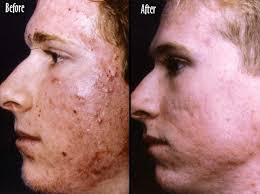


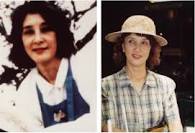

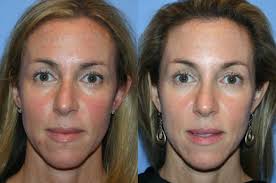
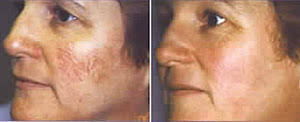
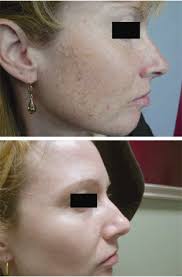



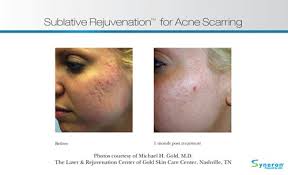
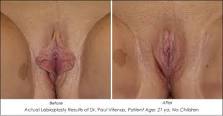

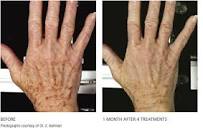
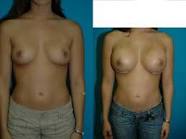
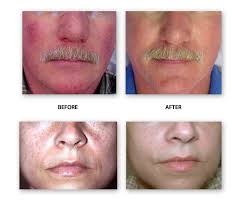

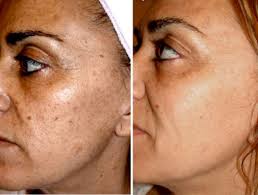



.
Types
There are three types of photorejuvenation:1. Thermal photorejuvenation using a radio-frequency device to induce a thermal effect in the skin.
2. Chemical photorejuvenation with chemical peels.
3. Mechanical photorejuvenation with lasers
What is photo rejuvenation and what is resurfacing?
Photo rejuvenation is a general name for a variety of procedures. The basic definition is it is a thermal disturbance of the skin's collagen. The result of this process is an activation of the healing process and the release of substances which influence the regeneration of skin cells. The cell activity is stimulated and thus new collagen fibers are created. Skin strength and elasticity therefore improves. Other skin problems that can be treated using photo rejuvenation includes the disappearance of pigment stains and tiny veins, the filling of small wrinkles and scars and a general improvement in skin quality. Photo rejuvenation is a very gentle treatment and therefore can be combined with a chemical peel, other laser treatments, application of botulinum toxin, skin implants and it's possible to have photo rejuvenation after surgical treatments.
Resurfacing is a method of skin treatment in which a laser is used to remove the top skin layer. The skin is eliminated using a beam from an Erbium or CO2 laser. The results of resurfacing is a smoothing of wrinkles and small scars, skin lifting and general rejuvenation. Resurfacing is more invasive than photo rejuvenation.
Why photo rejuvenation Prague?
Prague has many attractive features for those considering photo rejuvenation abroad. Its location in Central Europe is easy to access; its mild climate is conducive to healing and its experienced clinics and photo rejuvenation surgeons ensure you'll receive the best possible care. Photo rejuvenation Prague costs are often much more affordable than in the UK or with the NHS. For more information about getting to and around the Czech Republic, please visit our handy cosmetic surgery Prague info guide.Photo rejuvenation
Photo rejuvenation is a gentle warming of the skin with low doses of light energy. The source of energy can be either intense pulse light (IPL), pulse pigment laser or diode laser. This warming causes stimulation of the cells which produce collagen fibers. The process encourages new development of collagen, smoothes out little wrinkles and stretches the skin. The light energy is partly absorbed in dilated facial veins which causes them to seal and subsequently disappear in a few weeks. Photo rejuvenation can cause an improvement of facial pigment stains as well. The healing process following photo rejuvenation is complete in approximately 7 to 14 days.
Are you a good candidate for photo rejuvenation or resurfacing?
If you suffer from rough facial skin, wrinkles, acne or smallpox scars or pigment stains, photo rejuvenation or resurfacing may be a good option for you. It is necessary to have realistic expectations and realize that photo rejuvenation does not bring as radical results as other cosmetic treatments, like a face-lift) To see before and after photos of photo rejuvenation Prague please visit our picture gallery.
Benefits
Photorejuvenation can provide many benefits that can include, for example, virtually no recovery time and little discomfort. Other benefits include; regaining a more youthful look (through collagen stimulation), reducing wrinkles, enhancing self-esteem, reducing the effects of rosacea, reducing the size of pores (by lessening oiliness) and providing a more even skin tone (by removing age spots, sun spots and darker blotches on the face).Procedure
Those who are allowed to perform photorejuvenation treatments will vary from state to state and can include doctors, certified physician’s assistants, Registered Nurses and, in some states, licensed aestheticians are cleared to work with certain lasers. All, however, should have experience with laser techniques. It’s recommended, though, if you are considering photorejuvenation, you should first seek a qualified dermatologist or cosmetic surgeon that can perform your procedure.The procedure, itself, can take from 15 – 45 minutes. This depends on the area that is being treated. When you first arrive at the treatment facility, you will be taken to the laser room and your eyes will be protected by eye pads or glasses with specialized lenses.
Then a cooling gel is applied to the treatment area on your skin. The laser tool will have a glass surface that is applied to the skin and light pulses will begin to flash. At that point, you will feel a slight stinging sensation. When the pulses of laser light are applied to the skin, the skin tissues absorb the light’s energy and this is what stimulates collagen production.
When the treatment is concluded, the gel is wiped off, the area is cleaned with a warm towel or cloth and a moisturizer containing a sunscreen is applied. A cold pack may be applied for a few minutes if there is evidence of any swelling. In most cases, you will be allowed to apply foundation makeup afterwards.
A series of six treatments will usually be required for optimal results and there will usually be a 3-4 week interval between treatments. This can vary, however, depending on the patient’s skin condition and the area to be treated. Most patients will notice a smoother feel and look to their skin, even after the first treatment. Each subsequent treatment should produce greater improvements.
Recovery
There is no extensive recovery time for photorejuvenation. There will be temporary, mild swelling and possibly some crusting, a small blister or a small bruise. Other side effects are rare and should be covered in your consent form review.For the treatment of veins, the skin may look slightly more red, for the next 2-5 days, after the procedure. The patient is usually allowed to use makeup to cover these issues.
Age spots and freckles will tend to look darker for the first 3-7 days following treatment. These will begin to clear and should be in the process of resolving in about a month. It should be noted that, on the average, it will take 3-5 treatments for age spots to fully clear.
The length of time that results last will depend on the amount of sun exposure received after treatment. Unprotected sun exposure will cause brown spots and/or redness to return. However, proper care of the skin will keep your skin looking good with annual maintenance procedures. In order to maintain collagen growth, a treatment may be indicated every 6-12 months.
Risks Associated with Photo Rejuvenation
IPLs (Intense Pulsed Light) can cause burns that can be serious. So, be aware of spas that have no medical doctor in their facility and have lasers that are “technician operated” (with limited training). “Technician” is a term that is often used to describe someone with no medical background. This situation is best avoided.Possible risks can include scabbing, blistering, bruising and pigmentation changes. Most of these issues are temporary, though.
Procedure Costs
The average cost for a full facial treatment runs $300 – $500 depending on the region where it is performed and the experience of the practitioner. This will work out to $1,000 – $2,500 for a series of 3-5 treatments. A combination chest-neck-face treatment can cost $800 – $1,000 or more. This would translate into $4,000 – $5000 for the entire series. Hand treatments are usually about $250.You should approach “deals” and price “specials” with caution. IPL equipment that is sold to spas and salons is not as powerful as the equipment that is sold to doctor’s offices. The treatments may appear to be a good deal when, in essence, you would not be receiving the same laser treatment or benefit from the expertise of a doctor’s office.
Before the treatment
During the first consultation, the doctor will discuss with you your ideas and expectations for photo rejuvenation surgery. He/she will check the condition and elasticity of your skin. If your wrinkles are too deep and/or the skin too loose, the doctor may recommend a combination of photo rejuvenation and another type of treatment, or a more radical procedure, like a face-lift, to achieve the best possible results. The doctor will provide you with all instructions concerning skin care before and after the treatment.
What are the results of photo rejuvenation and resurfacing?
The results of resurfacing are excellent. Your skin can look 5 to 10 years younger. If you choose to have photo rejuvenation, you can count on good results in the appearance of your skin's surface, the disappearance of dilated veins and pigment stains. The impact on deep wrinkles is average. The best result is the smoothing out of wrinkles around the eyes.
To achieve the best results from photo rejuvenation, it is necessary to undergo approximately four treatments in a period of six weeks. The final result can be assessed about 3 months after the end of the treatments.
How long will the effects of photo rejuvenation and resurfacing last?
The effects are long-lasting but do not prevent other signs of skin ageing such as the development of new wrinkles, dilated veins or pigment stains. After some time, you may feel the need to undergo photo rejuvenation or resurfacing again.






0 comments:
Post a Comment